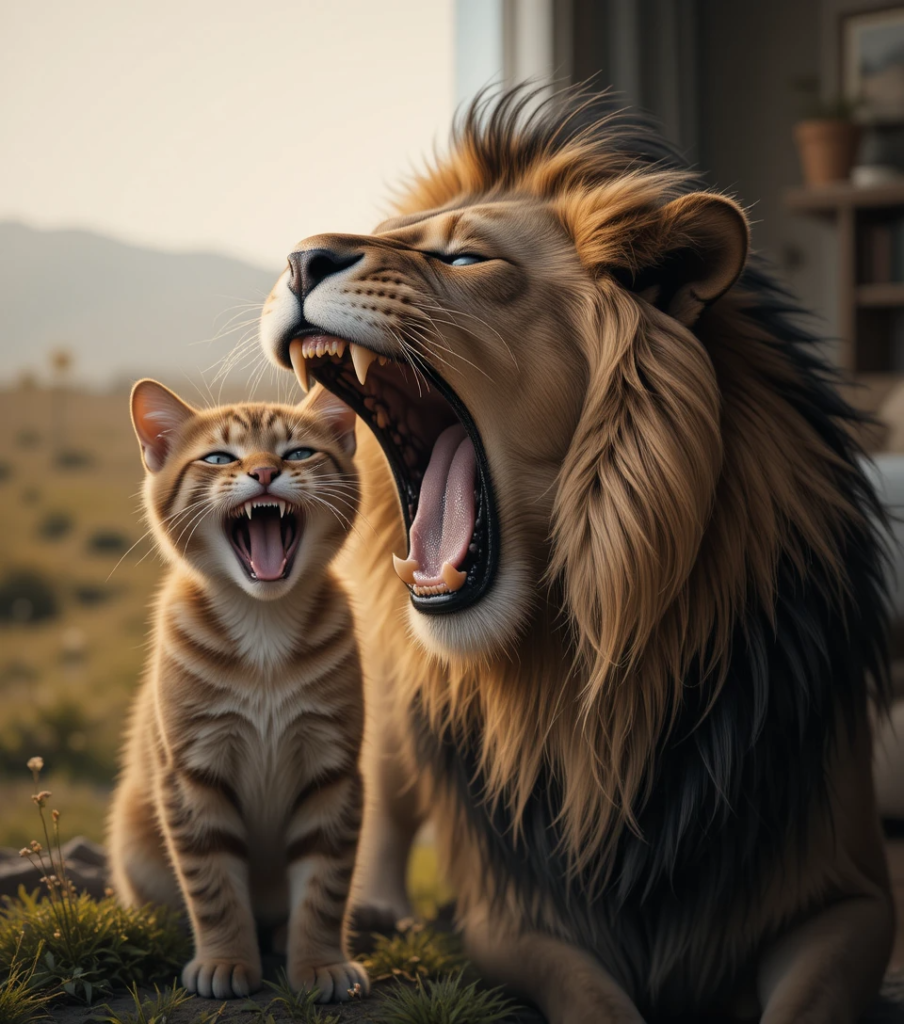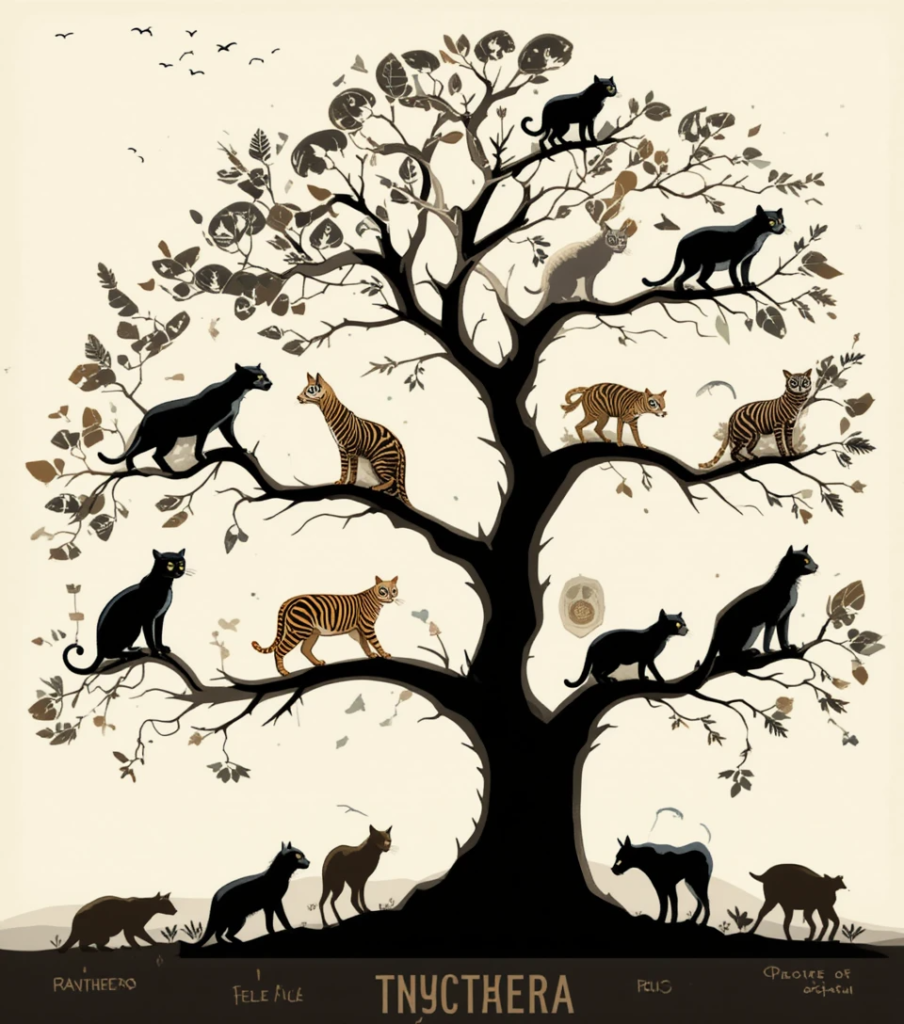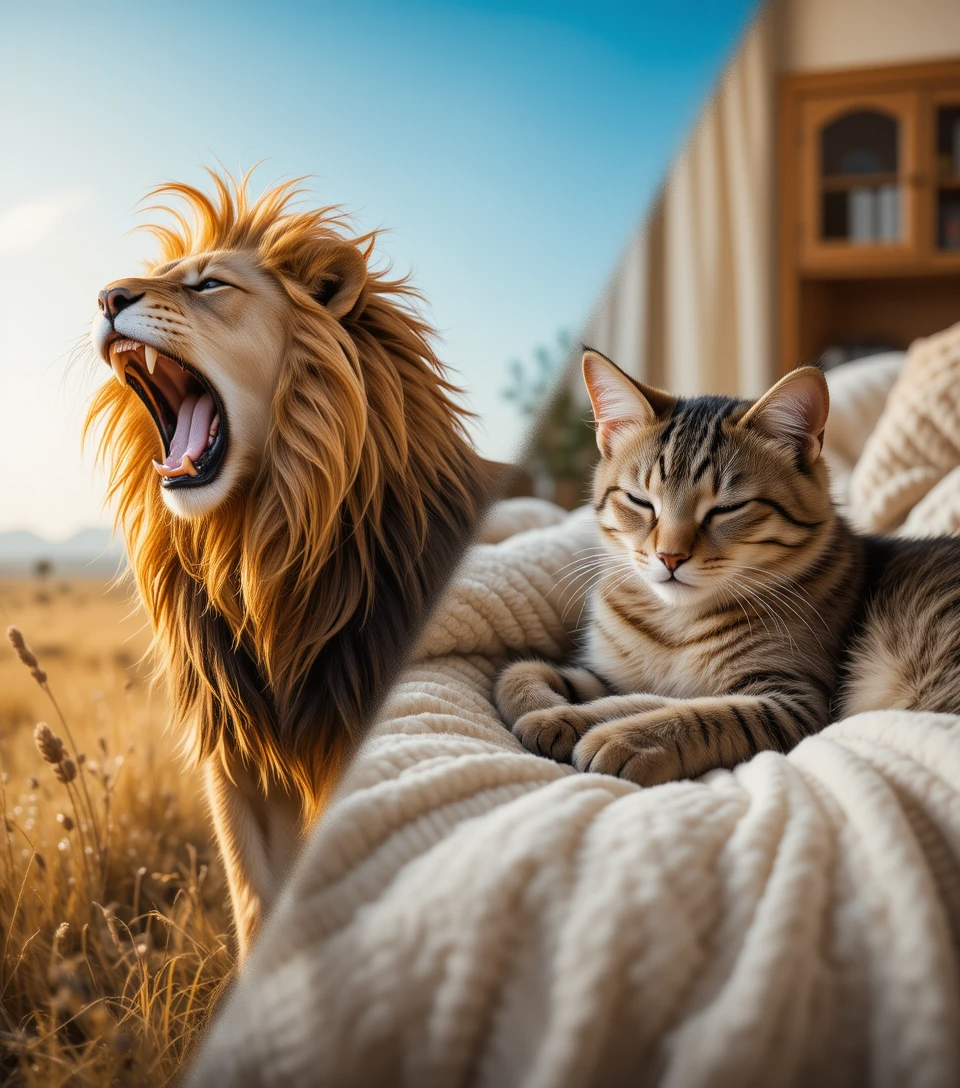Cats have long captured our imaginations—stealthy hunters, mysterious companions, majestic beasts. But did you know the cat family is commonly divided into two distinct groups? One roars, the other purrs. And behind this divide lies an evolutionary story full of biology, sound science, and awe-inspiring adaptations. Let’s explore why this split is more than just noise—it’s utterly fascinating.
🐾 The Two Sides: Roaring vs. Purring Cats

The family Felidae—the biological group that includes all cats—is split between two primary groups:
- The roaring cats (genus Panthera)
- The purring cats (genus Felis and others)
This division isn’t just about sound. It reflects deep differences in anatomy, behavior, and evolution. Roaring cats include lions, tigers, jaguars, and leopards. Purring cats range from domestic cats to bobcats, lynxes, and cheetahs.
🦁 Meet the Roaring Cats: The Mighty Panthers
Roaring cats belong to the Panthera genus. This group includes:
- Lions
- Tigers
- Leopards
- Jaguars
What unites them? Their incredible ability to roar—a loud, guttural sound used to claim territory or communicate dominance. The secret behind the roar lies in their anatomy. These big cats have:
- A loosely attached hyoid bone, allowing more vibration
- Thick vocal cords with a square shape, producing deeper sounds
The result? A roar that can travel miles in the wild.
🐱 The Purring Cats: Our Soft-Spoken Companions
On the other side of the divide are the purring cats—a group that includes:
- Domestic cats
- Bobcats
- Lynxes
- Cheetahs
- Ocelots
These cats can’t roar, but they purr continuously—a behavior mostly linked to comfort, bonding, and even healing. Unlike their roaring relatives, their hyoid bone is rigid, which limits their ability to produce low-frequency roars but allows for consistent purring.
Purring is one of the most soothing sounds in the animal kingdom—and unlike roaring, it’s often associated with affection.
🔬 What Makes a Roar Possible? The Science Behind the Sound
The difference between a roar and a purr comes down to vocal anatomy. Specifically:
- Hyoid Bone: In roaring cats, this bone is semi-flexible. In purring cats, it is fully ossified (rigid).
- Larynx Structure: Roaring cats have longer and more massive vocal folds.
- Air Pressure: Roars are produced with lower lung pressure and longer vocal folds, making the sound deeper and louder.
These adaptations evolved for survival: roaring cats needed to assert dominance and claim territory in wide, open spaces. Purring cats, often solitary and stealthy, developed softer sounds for close-range communication.
🧬 The Evolutionary Split: How Did This Division Happen?

The evolutionary divide between roaring and purring cats likely occurred 10–15 million years ago. Genetic and fossil evidence suggests that:
- Big cats (Panthera) evolved in open grasslands where roaring was essential for communication over long distances.
- Small cats (Felis and others) adapted to forested or isolated environments where subtle communication like purring was more practical.
Natural selection shaped their bodies—and their voices—for very different lifestyles.
📣 Communication Styles: Roar to Intimidate, Purr to Bond
The vocal behaviors of cats are deeply tied to their social roles:
- Roaring is used to intimidate rivals, attract mates, and assert dominance.
- Purring is used for bonding, calming offspring, and even self-healing.
Interestingly, studies show that domestic cats may purr even when injured—possibly stimulating healing through low-frequency vibrations. Talk about built-in therapy!
😻 Why This Division Is So Fascinating
The purring vs. roaring divide is more than academic—it’s a window into how evolution shapes function and form. It’s fascinating because:
- It shows how structure determines behavior
- It reveals how environments influence evolution
- It connects the tiny house cat to the majestic lion
Both groups, despite their differences, share a common ancestry and a set of adaptations that make them supreme predators in their own realms.
🏠 Implications for Understanding Domestic Cats
Understanding this divide helps explain the behavior of our own feline companions:
- Why do cats purr when content or stressed?
- Why can’t they roar like lions in cartoons?
- Why do some behaviors mimic their wild relatives?
The answers lie in anatomy and ancestry. Our domestic cats (Felis catus) are part of the purring group—descendants of small wildcats who used silence and stealth, not volume, to thrive.
🎉 Conclusion: Celebrating the Unique Cat Family
From the thunderous roar of a lion to the gentle hum of a housecat’s purr, the cat family (Felidae) is as diverse as it is extraordinary. Whether built for dominance or intimacy, each feline voice tells a story of survival, adaptation, and beauty. And that’s what makes this family of predators—and our connection to them—so endlessly fascinating.
❓ 10 Frequently Asked Questions (FAQs)
- What are the two main divisions in the cat family?
The cat family is divided into roaring cats (Panthera) and purring cats (Felis and others). - Why can some cats roar while others purr?
It comes down to the anatomy of the hyoid bone and vocal cords. - Which cats can roar?
Lions, tigers, leopards, and jaguars—all in the Panthera genus—can roar. - Which cats can purr?
Domestic cats, bobcats, lynxes, cheetahs, and others can purr but not roar. - Can a cat both purr and roar?
No. Cats are generally specialized for one or the other based on their anatomy. - Is the cheetah a roaring or purring cat?
The cheetah is a purring cat and cannot roar. - What is the hyoid bone, and why is it important?
It’s a small bone near the throat that influences vocal range. Its flexibility or rigidity determines whether a cat can roar or purr. - Why do domestic cats purr when they’re hurt?
Purring may stimulate healing, possibly through low-frequency vibrations. - Are all big cats in the roaring group?
Not all. For example, the cheetah is a big cat that purrs. - What makes this division so fascinating?
It reveals the beautiful complexity of evolution, anatomy, and communication in one of nature’s most beloved animal families.

